The strangest creatures in the world. The most unusual creatures
We often hear that now more and more animal species are becoming extinct or on the verge of extinction, and their complete disappearance is only a matter of time. Hunting, destruction of natural habitats, climate change and other factors have led to the fact that the rate of loss of animal species is 1000 times greater than the rate of restoration of the natural background. And although the extinction of animals is always sad, sometimes for us humans, it can even be beneficial.
From 12-metre-long megasnakes to giraffe-sized flying creatures, check out this list of 25 animals you wouldn't want to see next to.
(Total 25 photos)
Post Sponsor:
Source: list25.com
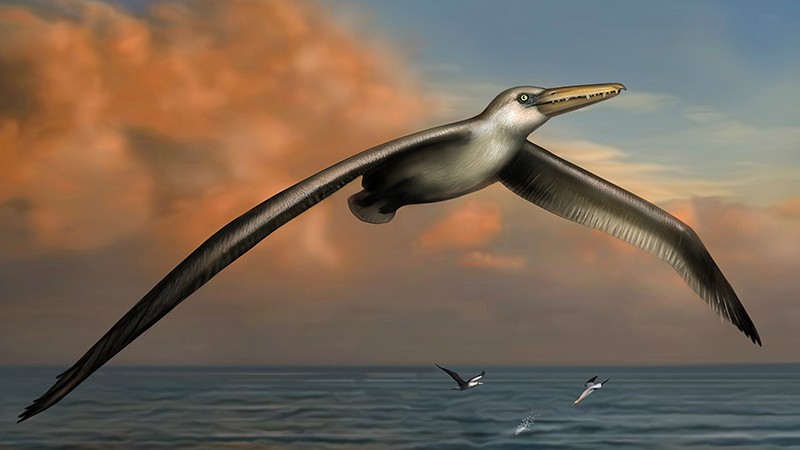
1. Pelagornis sandersi
With a wingspan of about 7 meters, Pelargonis sandersi was apparently the largest flying bird to ever exist on Earth. It looks like she could only fly by pushing off a cliff, and most spent her life above the ocean, relying on wind currents rising from the ocean to keep her afloat. Although compared to pterosaurs, whose wingspan was almost 12 meters, this bird was still quite “moderate” in size.

Similar to modern centipedes in shape and behavior, Euphoberia still had one significant difference - it was more than 90 cm in length! Although scientists aren't entirely sure what exactly it ate, we do know that some modern centipedes feed on birds, snakes and bats. If a 25-centimeter centipede could hunt birds, imagine what a nearly meter-long one could hunt!

3. Gigantopithecus
Gigantopithecus lived from 9 million to 100,000 years ago in modern Asia. It was the largest species of monkey on Earth. It is believed that this creature, up to 3 meters tall and weighing up to 540 kg, walked on four legs, like gorillas and chimpanzees, but some believe that it could walk on two limbs, like humans. The properties of their teeth and jaws suggest that these animals were able to chew coarse, fibrous food by cutting into it and grinding it.
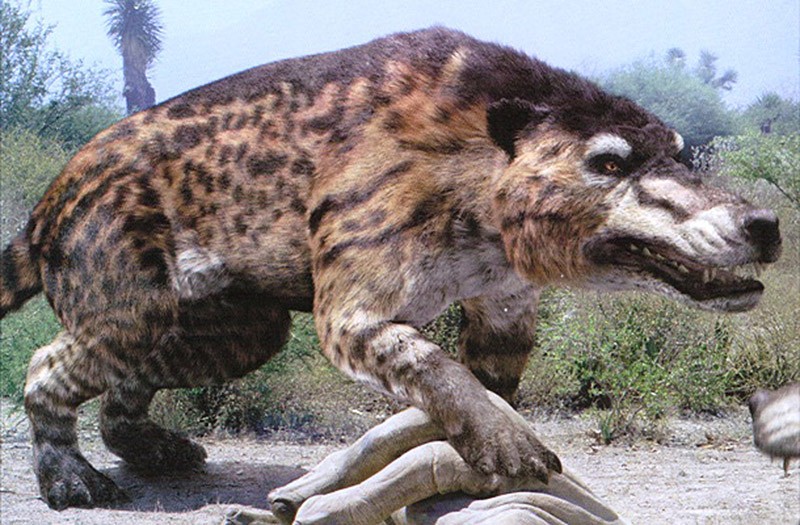
4. Andrewsarchus
This cutie lived during the Eocene era, about 45-30 million years ago. Andrewsarchus was a huge carnivorous mammal. Given the skull and several bones found, paleontologists estimate that this predator could weigh up to 1,800 kg, making it the largest land mammal predator in history. However, the feeding behavior of this animal is not entirely understood, and some theories suggest that Andrewsarchus may have been omnivores or even scavengers.

5. Pulmonoscorpius
The scientific name of this creature translates to “breathing scorpion.” He lived during the Visean era (c. 345-330 million years ago) of the Carboniferous period. Relying on fossils found in Scotland, scientists believe that this species reached 76 cm in length. It lived on land and probably fed on small arthropods.
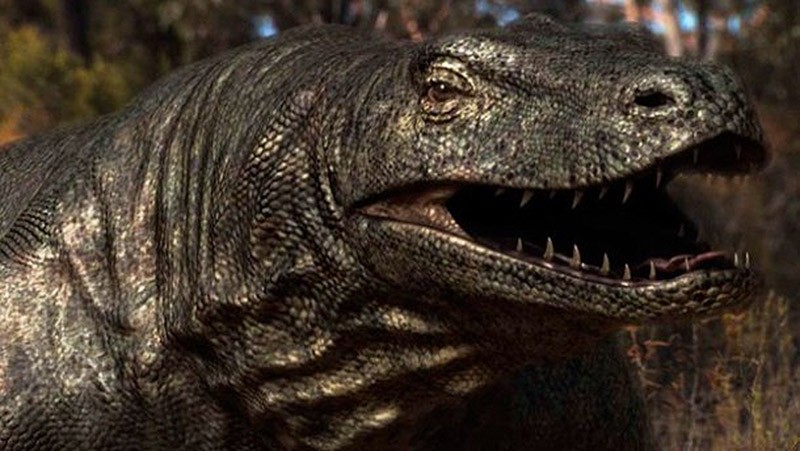
6. Megalania
Megalania lived in South Australia. It was a huge lizard that went extinct about 30,000 years ago, which means it may well have been encountered by the first Aborigines of Australia. Scientists disagree on the size of this lizard - it may have reached 7 meters in length, making Megalania the largest land lizard in history.
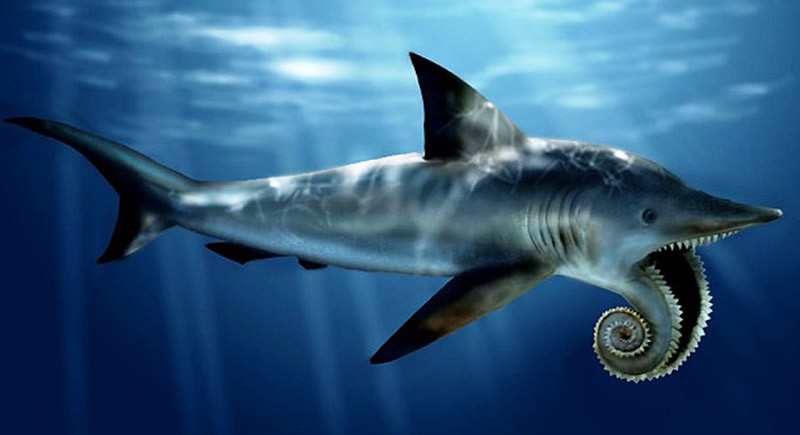
7. Helicoprion
One of the prehistoric centenarians (310-250 million years ago) - Helicoprion - is a genus of extinct shark-like creatures with an interesting jaw. Reached 4 m in length, but its closest living relatives - the chimaeras - can reach only 1.5 m in length.
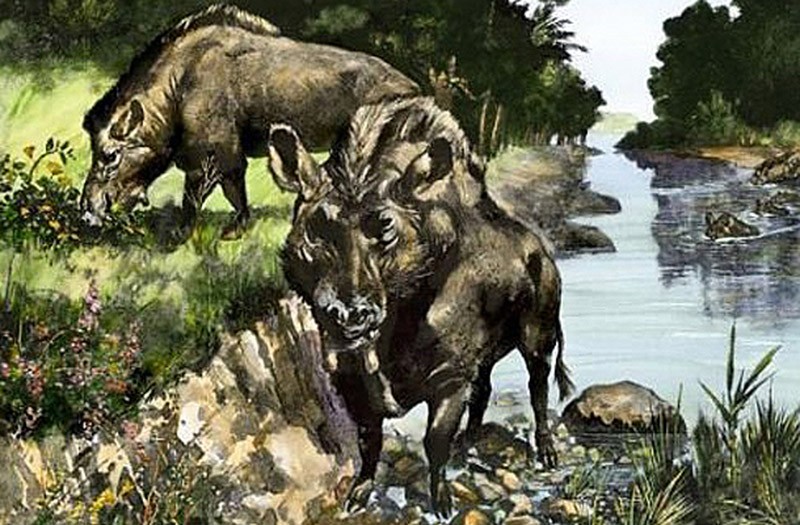
8. Entelodons
Unlike their modern relatives, entelodons were boar-like mammals with a particular gourmet taste for meat. Probably one of the most fearsome-looking creatures in history, entelodons walked on four legs and were almost as tall as a man. Some scientists believe that entelodons were even cannibals. Well, if they ate each other, do you think they wouldn't want to eat a human?
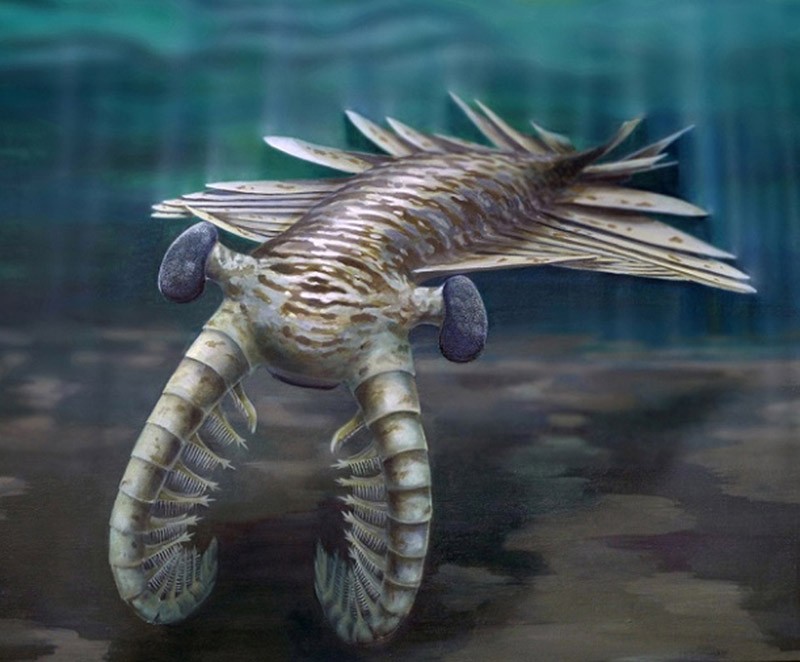
9. Anomalocaris
Probably lived in all seas of the Cambrian period. Translated, its name means “abnormal shrimp.” This is a genus of marine animals, close relatives of arthropods. Scientists believe that it hunted solids sea creatures, including trilobites. They had unique eyes with 30,000 lenses - it is believed that these were one of the most “advanced” eyes in the history of the species.

10. Meganeura
Meganeura is a genus of extinct insects from the Carboniferous period. Resembles modern dragonflies (and is related to them). With a wingspan of up to 66 cm, it is one of the largest flying insects in the history of our planet. Meganeura was a predator, and its diet consisted mainly of other insects and small amphibians.

Attercopus was a genus of arachnid animal with a scorpion-like tail. For a long time, Attercopus was considered the prehistoric ancestor of modern spiders, but scientists who discovered its traces soon came to a different opinion. It is unlikely that Attercopus spun webs, although it may have been used to wrap eggs, lay frame thread, or build the walls of its burrow.
12. Deinosuchus
Deinosuchus is an extinct relative of modern alligator crocodiles that lived 80-73 million years ago. Although he was larger than any of them modern species, he looked almost the same. It reached 12 meters in length and had sharp large teeth capable of killing and devouring sea turtles, fish and even large dinosaurs.
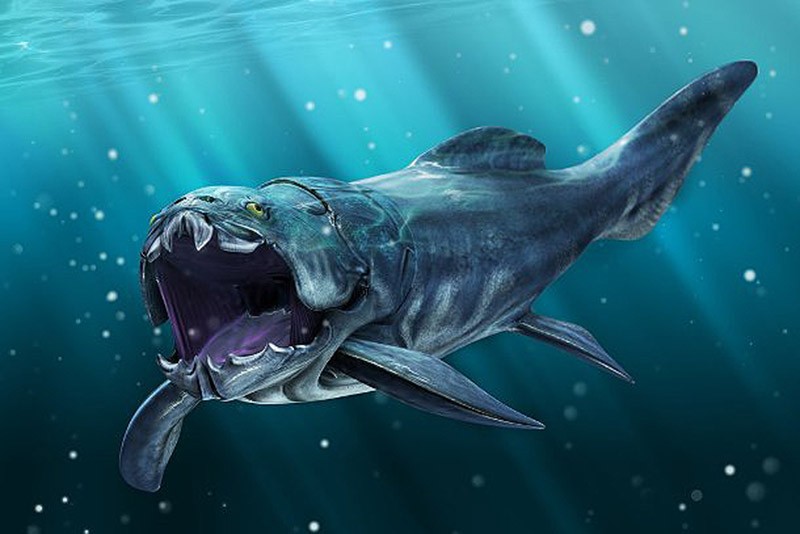
13. Dunkleosteus
Living at the end of the Devonian period about 380-360 million years ago, Dunkleosteus was a huge super-predatory fish. Due to its terrifying size (up to 10 m in length and weighing almost 4 tons), it was the apex predator of its time. This fish had strong armor, which made it a relatively slow but very powerful swimmer.
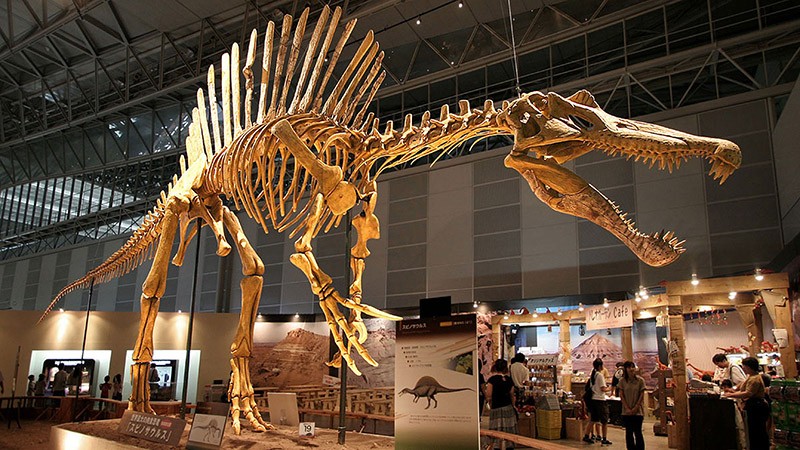
14. Spinosaurus
Larger than Tyrannosaurus Rex, Spinosaurus is the largest carnivorous dinosaur of all time. It reached 18 m in length and weighed up to 10 tons. They ate tons of fish, turtles, and even other dinosaurs. If this horror were alive today, we most likely would not be alive.

15. Smilodon
Smilodon lived in the territory of Northern and South America during the Pleistocene era (2.5 million - 10,000 years ago). This is the best example of a saber-toothed cat. An excellent predator with particularly well-developed forelimbs and incredibly long, sharp fangs. The largest individual could weigh up to 408 kg.
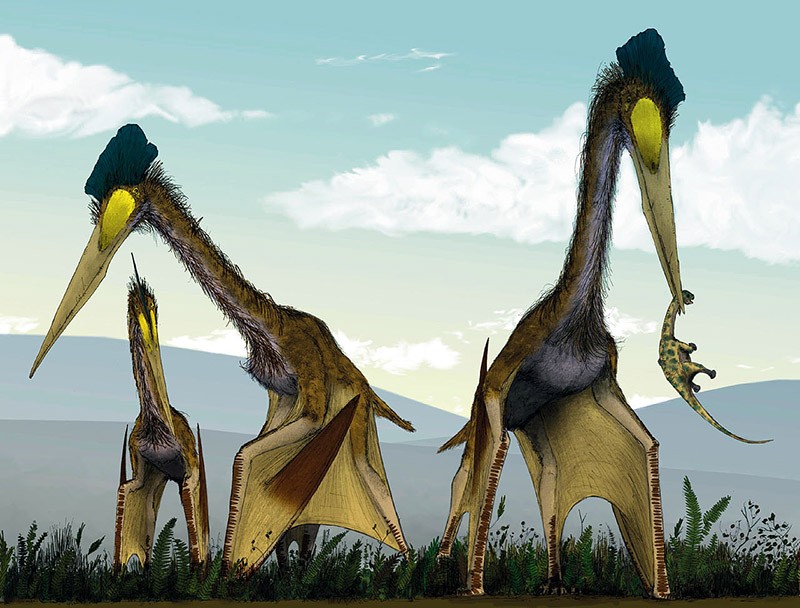
16. Quetzalcoatlus
The wingspan of these creatures could reach an incredible 12 meters. This pterosaur was the largest creature ever to fly, including modern birds. However, it is very difficult to estimate the size and weight of these huge animals, because... No existing animal has the same body plan, so published results vary widely. One of the characteristic features of these animals was that they all had unusually long and rigid necks.
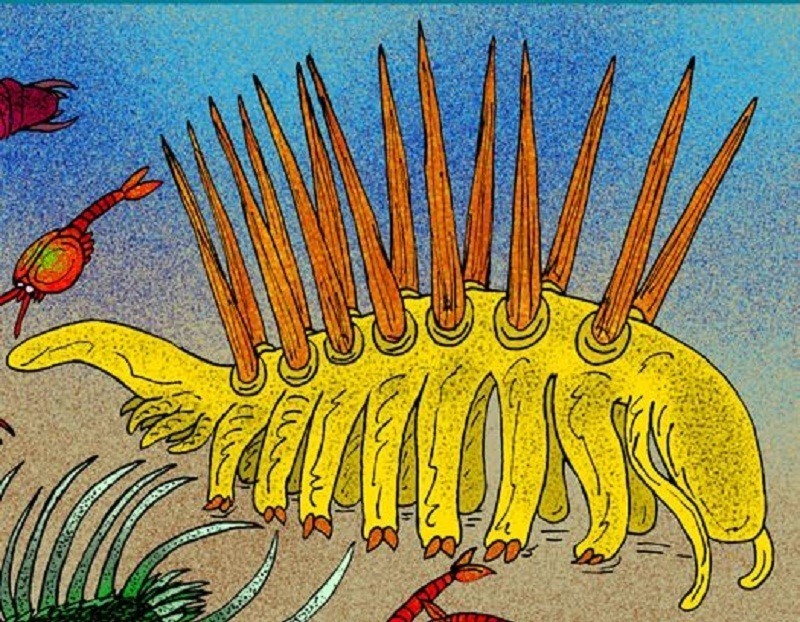
17. Hallucigenia
The name comes from the idea that these creatures are very strange, almost like a hallucination. These worm-like creatures were 0.5-3 cm in length and lacked some sensory organs on their heads, such as eyes and nose. Instead, Hallucigenia had seven tentacles on each side of its body, as well as three pairs of tentacles behind them. To say that this is a strange creature is an understatement.
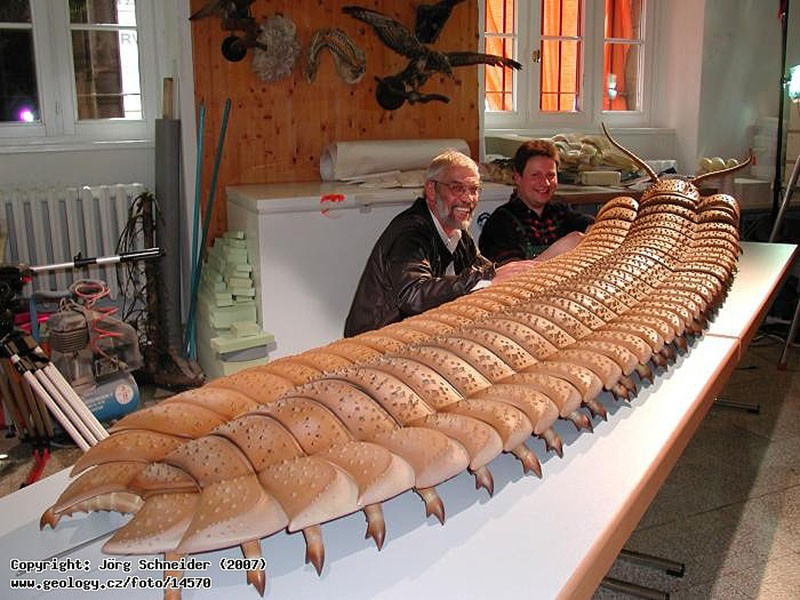
18. Arthropleura
Inhabitant of the Upper Carboniferous period (340-280 million years ago). Lived in the territory of modern North America and Scotland. It was the largest species of terrestrial invertebrate in history. Despite their enormous length, up to almost 2.7 meters, Arthropleura were not predators; they fed on rotting forest plants.
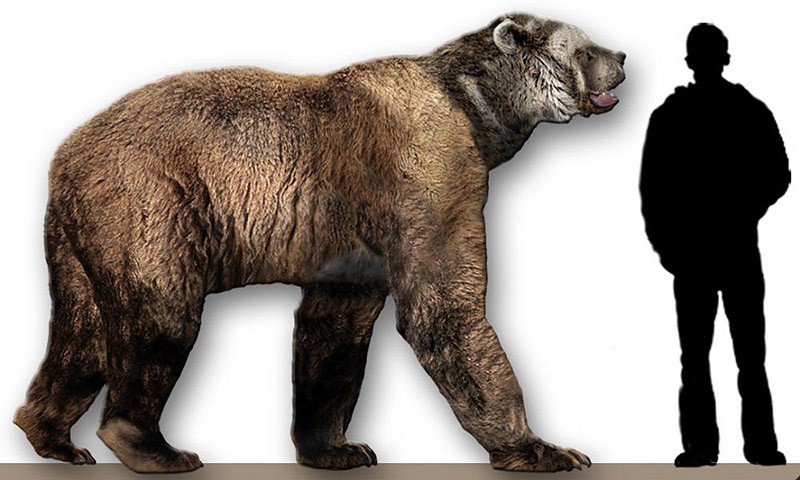
19. Short-faced bear
The short-faced bear is an extinct species of bear that lived in North America during the Pleistocene era until 11,000 years ago, making it the "most recent" extinct creature on our list. However, its size is truly prehistoric. Standing on its two hind legs, the bear reached 3.6 m in height and 4.2 meters if it raised its front paw up. It is believed that these giants weighed more than 1360 kg.
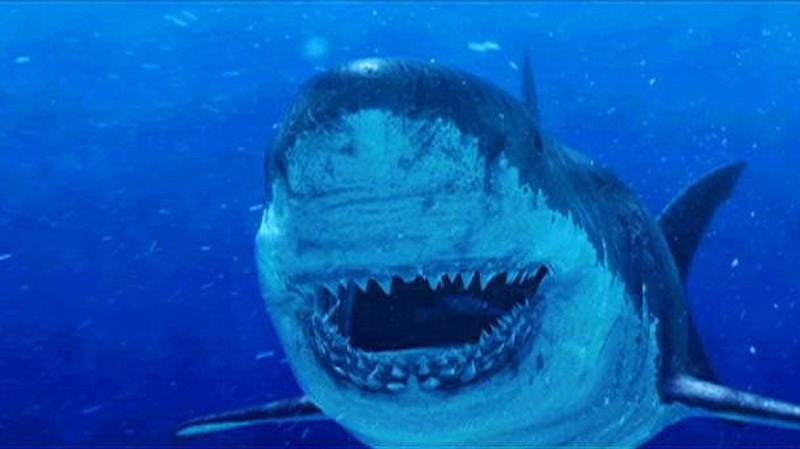
20. Megalodon
The name of this toothy monster translates as “big tooth.” This is an extinct species of huge shark that lived about 28-1.5 million years ago. With an incredible length of up to 18 meters, it is considered one of the largest and most powerful predators to ever live on Earth. Lived almost all over the world and looked like a larger and more terrifying version of the modern great white shark.

21. Titanoboa
Living approximately 60-58 million years ago during the Paleocene era, Titanoboa was the largest, longest, and heaviest snake in history. Scientists believe that individual representatives of the species reached 12 meters in length and weighed about 1133 kg. Their diet consisted of giant crocodiles and turtles, with which they shared the territory of modern South America.
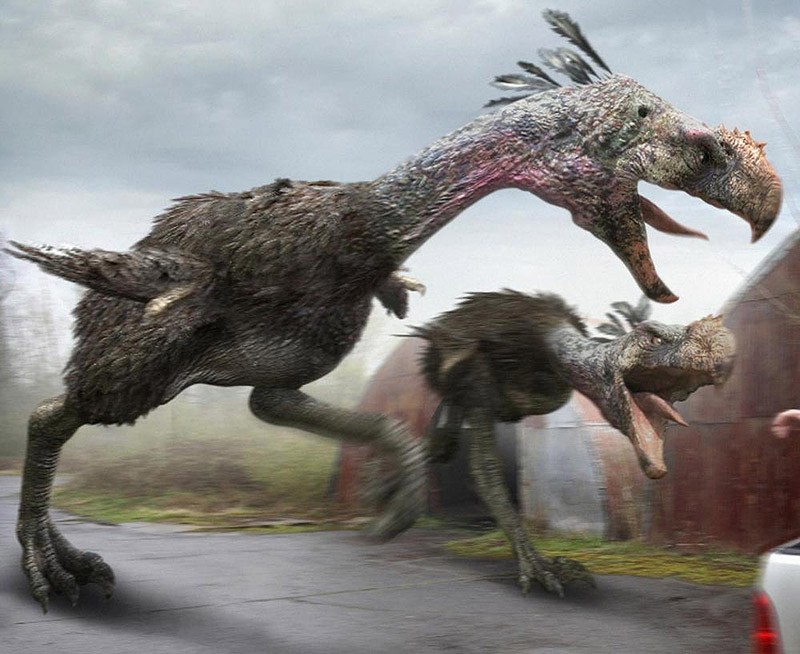
22. Fororacoaceae
Also called "terror birds", these prehistoric creatures are an extinct genus of large birds of prey that were the largest species in South America during the Cenozoic period, approximately 60 million years ago. The largest flightless bird of prey to ever roam the Earth. They reached 3 meters in height, weighed up to half a ton and supposedly could run as fast as a cheetah.
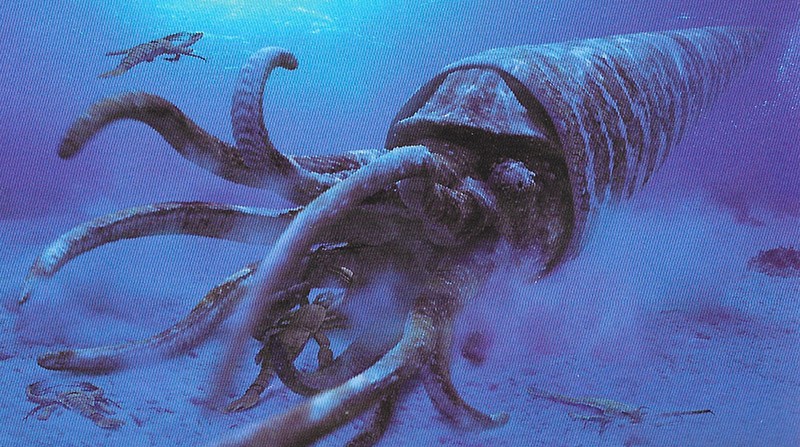
23. Cameroceras
Lived during the Ordovician period 470-460 million years ago. This is the giant ancestor of modern squids and octopuses. Most characteristic feature This mollusk had a huge cone-shaped shell and tentacles with which it caught fish and other sea creatures. It is believed that the size of its shell varied from 6 to 12 meters.
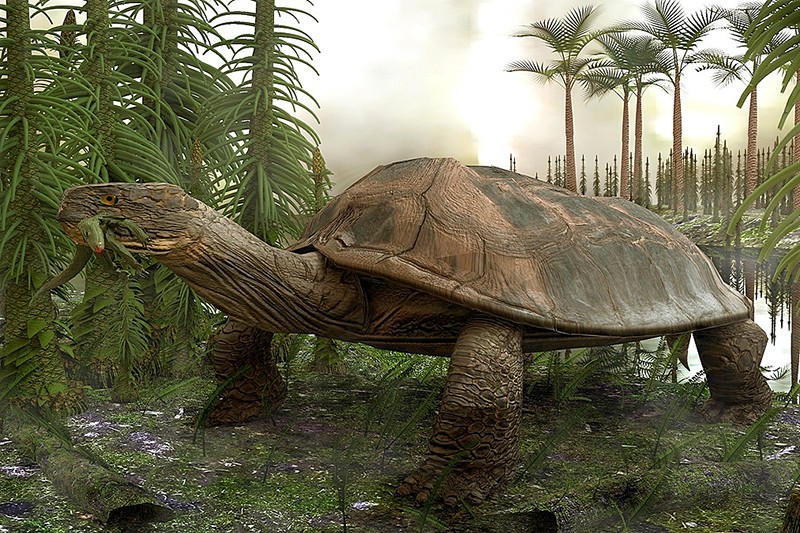
Carbonemys is an extinct genus of huge turtles that lived about 60 million years ago, i.e. they survived the mass extinction of the dinosaurs. Fossils found in Colombia suggest they had a shell that reached almost 1.8 meters. Turtles were carnivores, with huge jaws powerful enough to eat large animals such as crocodiles.
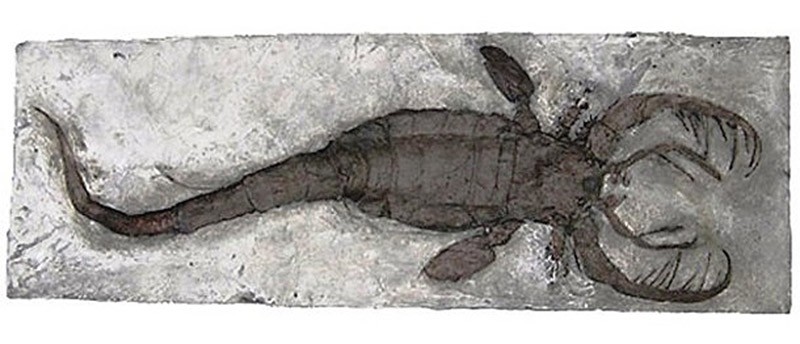
25. Jaekelopterus
Jaekelopterus, without a doubt, can be called one of the largest arthropods in the world - its length reached 2.5 meters. It is sometimes called the "sea scorpion", but in fact it is more related to the lobsters that live in freshwater lakes and rivers of modern times. Western Europe. This terrible creature lived about 390 million years ago, earlier than most dinosaurs.
Animals that inspire fear
Earth is the third planet from the Sun and the only one in our solar system where life is possible. Life originated on our planet billions of years ago. All this time she was developing and improving. Some species died out and were replaced by others. Now our planet is home to a huge number of species and subspecies of a wide variety of animals. When looking at some animals, a feeling of tenderness and a smile involuntarily arises. The sight of others causes involuntary fear and horror.
Sabertooth

They started this list with a very small, only fifteen centimeters in length, deep-sea fish - Sabertooth (Anoplogaster cornuta). Despite its small size, it looks very menacing. Rough, thick armored skin. In front are four long and sharp teeth with which this fish kills its victims. There are special canals in the upper lip of this fish; the lower teeth fit into them like a sheath. Some peoples call this fish “man-eating fish.” But she becomes like this in adulthood. The “youth” are so strikingly different in appearance that for half a century scientists considered them to be a different species of fish.
Next on the list is deep sea fish again - Hagfish (Myxine glutinosa), also known as the “witch fish”. It lives at depths of about two thousand meters in large colonies. The diet consists of small fish. They also eat dying and dead fish. They climb into it and gnaw it out from the inside. The fry of this fish are practically copies of adult fish. In addition to their size, they are also distinguished by the presence of female and male genital organs. And as they grow older, they choose their gender themselves. This choice depends on who dominates the group. Males or females. The hagfish is one of the few surviving species of jawless fish. He has truly unique abilities. In terms of the amount of mucus it secretes, it surpasses any animal known on Earth. It can do something that no vertebrate can - curl up into a knot. She can also sneeze. This is how she clears mucus from her only nostril.

Madgascar Aye-Aye
Another terrible beast lives on the island of Madagascar. This Aye-aye (Daubentonia madagascariensis), who is terribly reminiscent of Dobby the Elf from the Harry Potter story. Nature endowed this primate with teeth like a rodent. The middle finger on the paw is long. He uses it the same way a woodpecker uses its beak. And of course, in order to pick out food. The diet of this primate consists of nuts, larvae, and fruits, which it picks right on the move. Seeds and mushrooms are present in the diet. This primate has large incisors that grow throughout its life. The tail resembles a squirrel, and the muzzle resembles a rodent. The animal was considered extinct, but it was rediscovered in Madagascar in 1961. It is worth noting that this animal is one of the most amazing primates on Earth.
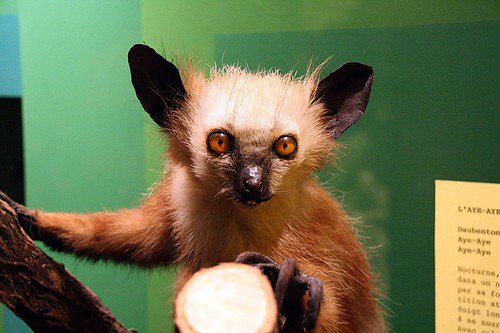
The giant squid is not a myth
Having missed one “land” mammal, the list again turns to the inhabitants of the deep sea - G giant squid (Architeuthis) in fourth place. Since time immemorial, sailors have been passing on legends about giant squids from mouth to mouth. From these legends arose the Norwegian myth of the “kreken”. But giant squids are not a myth at all. They really exist. The food of these giants consists of deep-sea fish and squid. The size of these monsters, according to unverified information, is up to 20 meters. If we rely on more stringent scientific information, then 9-10 meters.
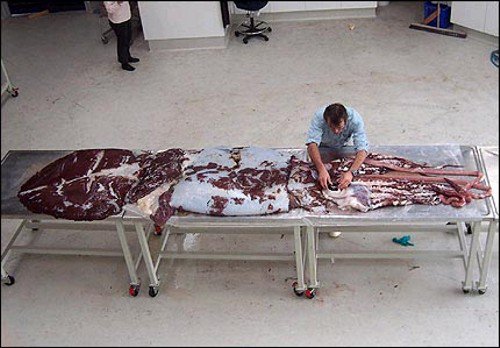
Fish Idiakant
Another unique representative of the deep sea on this list is fish Idiacanthus. It is also called “Black Dragon Fish”. Lives at a depth of about two thousand meters. Long. The female individual reaches a length of forty centimeters. And very flexible. The eyes are small. It has a chin barbel and long teeth. She needs them to catch other fish. Unlike females, males are only five centimeters long and have nothing but small eyes and a non-functioning intestine. The larvae of these fish develop very interestingly. Their eyes hang on long antennae. As the larva grows, the antennae contract and reach the eye sockets.

Vampire Bat
According to scientists, life originated in water. In the ocean. And she came out of the ocean onto land. So our list left the sea inhabitants and turned again to the inhabitants of the land. In sixth place on the list is Vampire (Desmodontinae). Vampires are bats, and they really are. They feed on the blood of animals. The sizes of these animals are small. To get an idea of their size, look at your thumb. This is exactly the size of these mice, and their wingspan reaches 0.2 meters. These animals not only fly, but also run well on the ground, reaching speeds of up to 2.2 m/sec.
![]()
Anaconda
For the vast majority of people, snakes cause truly superstitious fear. And this representative of the snake tribe took his rightful place - Anaconda (Eunectes murinus). This is truly a heavyweight, the weight of this snake often reaches 250 kg. This snake can stalk its prey while being almost entirely in the water. This is possible due to the fact that the anaconda's eyes and nostrils are located on the top of the head. In addition, it is one of the longest snakes in the world.
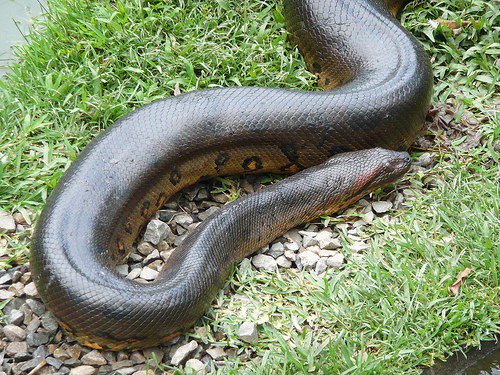
The eighth place was taken by a well-known predator - Wolf (Canis lupus). This predator has powerful jaws and strong body. Capable of long movements. A wolf can run for several kilometers at a speed of up to 10 km/hour. Wolves hunt mainly in packs, which makes them many times more dangerous.

Tasmanian devil
The next representative of “land” horror stories was Tasmanian devil (Tasmanian Devil). The habitat of this predator is the island of Tasmania. But there was a time when this predator inhabited the entire mainland of Australia. Several animals always gather for a meal. When eating food, these animals make sounds that seem like eerie screams to humans.

Human and nature
And closes this top ten Human (Homo sapiens). It would seem incorrect to put humans on a par with animals; after all, they are intelligent creatures. But the way man treats his planet barbarously, the way he destroys his habitat, one can only be horrified. Environmental pollution with toxic waste, deforestation... and the list goes on and on.
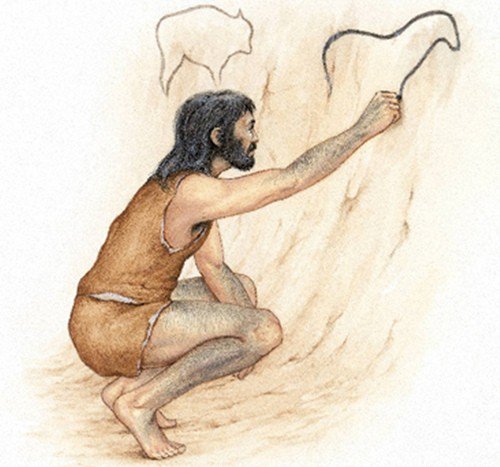
At first glance, the list of animals presented in the list is quite controversial. After all, there are more powerful and formidable animals on Earth. But scientists from the World Wide Fund for Nature gave preference to these animals. And all because these are the most ancient representatives of the animal world. And their ability not only to survive, but also to fend for themselves, makes them very dangerous animals.
Mikhail Simonov, Samogo.Net
The planet is inhabited by the most incredible and cutest creatures, but at the same time it is home to creepy species that haunt the mind in nightmares. Often, the creatures that live in the dampest and darkest corners do not pose any danger, but nevertheless, they awaken something very dark and primal in the human psyche. Part of our brain is developed in such a way that such creatures cause a frantic desire to send most of them back to where they came from.
12. Japanese spider crab
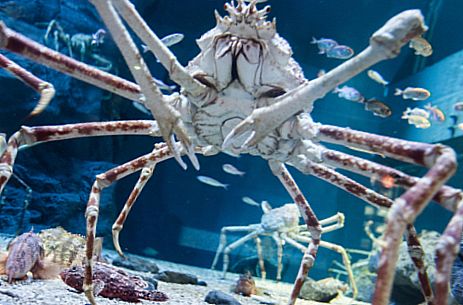
The Japanese spider crab took the worst from both the spider and the crab. The length is 4 meters. Lives in the sea up to 300 meters deep. To breed, spider crabs rise to shallow water, where you can take a closer look at them.
But remember: The creature is dangerous to humans. People were injured when faced with the claws of this creature.
11. Cortsideps from the fungal group
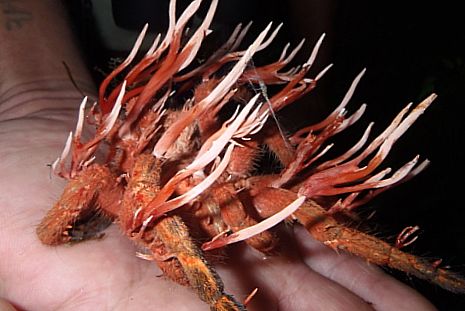
Cordyceps' favorite pastime is infiltrating creepy creatures like tarantulas. Cordyceps ignota- a genus of ergot fungi. Having settled inside, he " grows out».
Cordyceps unilateral (lat. Ophiocordyceps unilateralis) specializes in destroying the lives of ants, completely taking over the brain of the victim. The ant dies following the commands of the mushroom.
10. Star-nosed
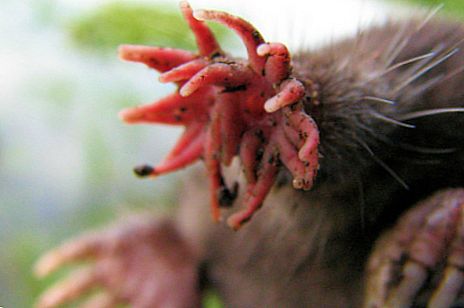
The mammal lives in swampy areas in North America and spends most of its time in complete darkness. The star-nosed fish finds food thanks to 22 skin growths on its face. The starfish is used to detect potential prey (mainly larvae and worms), each antennae has sensitive receptors. Surprisingly, these receptors are so sensitive that The starfish can “smell” prey even in groundwater.
9. Goliath Tarantula
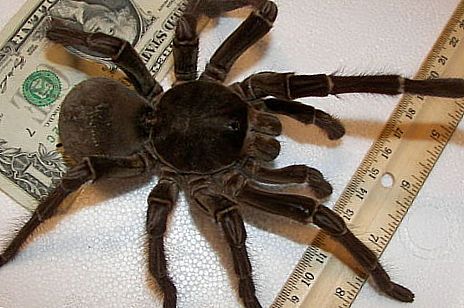
The Goliath tarantula spider has a limb span of up to 30 cm and can weigh up to 180 grams. It feeds on everything from small insects to lizards and birds. If you approach it, the spider begins to hiss. The hissing can be heard at a distance of up to 5 meters.
Anyone who wants to get close to the goliath will be met with sharp needles that it shoots out. They are very dangerous, irritate the skin and are very difficult to get rid of..
Residents of South America in the northeastern part eat these spiders. Before consumption, spiders are singed to get rid of unwanted hairs and then stewed in banana leaves. They say they taste like shrimp.
Once in the snail's system, the worm grows, forming outgrowths on the snail's body. These outgrowths visually closely resemble caterpillars, thereby attracting the attention of birds. But birds love caterpillars. Much to the regret of the worms, snails avoid the company of birds, preferring to spend most of their time in a dark and damp environment. That is why the worm takes control of the snail’s consciousness, forcing it to leave its usual habitat and go in search of sunlight and birds. As a result, the bird eats the defenseless snail, and the worm quietly lays eggs inside.
7. Aye-aye
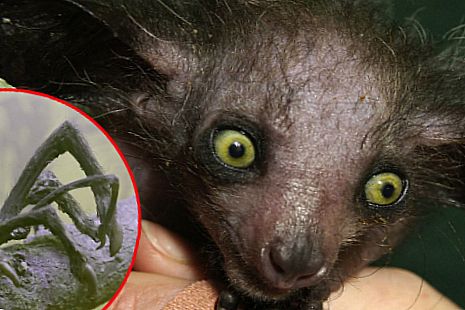
The aye-aye is a species of lemur that primarily lives in treetops and comes down at night to hunt. The aye-aye is an omnivore, but its favorite food is large, juicy insects and larvae that live under the bark of trees.
With the help of a very long middle finger, aye-aye reaches out of the cracks of trees. favorite dish. A unique primate lives in tropical forests Madagascar and is endangered. The reason for this is local population who believes that meeting with aye-aye is a bad omen. Some even believe that it is the primate who will sneak into this person’s bedroom at night and pierce the heart with its long, sharp finger. Therefore, when meeting an ah-ay, a person kills him.
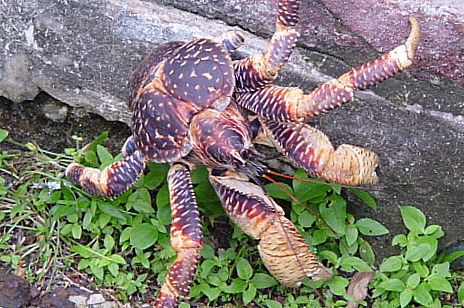
The disgusting arthropod lives on land. The coconut crab has a claw span of more than 90 cm and weighs about 4 kg. He was so nicknamed for his ability to easily crush coconuts.
Like most creatures with an exoskeleton, As the coconut crab matures, it sheds its heavy outer armor. This makes it very vulnerable and in order to speed up the process of the emergence of new protection, the crab eats its own shell and forms a new one from nutrients. Crabs eat a wide variety of foods: from fruits to their own kind.
Last few years Coconut crab numbers have declined significantly b. The reason for this was people who invaded their habitat and began building roads where the migration routes of crabs lie.
5. Giant isopod
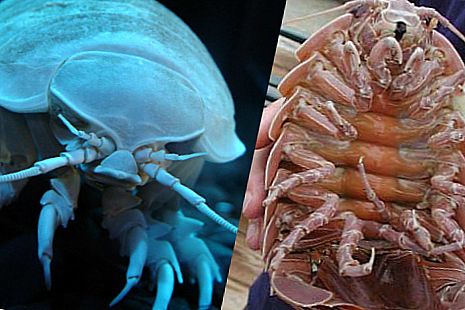
A creature the size of a small puppy with many legs. There are different species of giant isopods found around the world, but in general they are very similar.
Despite its intimidating appearance and size, giant isopods are absolutely harmless creatures. They live at a depth of 200 to 2000 meters, where they similarly collect any “ garbage", which we manage to find.
4. Tongue woodlice
3. Barnacle
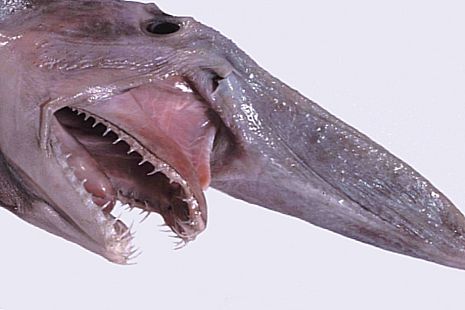
The goblin shark got its name due to its good appetite and bizarre appearance. Everything about this shark causes disgust and trembling: from its pinkish-transparent body to its elongated muzzle with needle-like teeth. Unlike other sharks, The goblin shark's jaws are not only movable, but can move forward.
1. Tapeworm
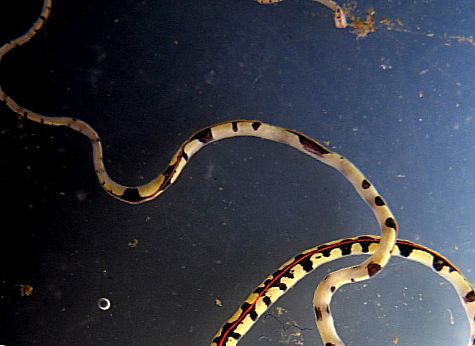
The reason why this tiny creature can be disgusting can be summed up in one word: trunk. Capturing the victim, the worm compresses the internal muscles with such force that it practically turns itself inside out, and the trunk increases to thirty times the length of the body in order to absorb its victim.
People usually say about dogs - how cute they are...
Every owner loves his dog, no matter what it is. What can you say about these dogs? watch the video TOP 12 MOST SCARY DOGS IN THE WORLD
Nature has created a huge number of animals living in all corners of our planet. Some of them look so fantastic that it is difficult to believe in their reality. Let's learn more about the most unusual creatures.
Unusual animals
It turns out that there are animals whose existence we don’t even know. For example, isn't it amazing to have a creature like a star-nosed creature? It is also called the starfish. The star-nosed mole is a close relative of the European mole, but in appearance it looks more like a monster from some horror movie. This animal lives in the forests of North America. Its dimensions are small - only nine to fifteen centimeters. The most unusual thing about the star-nosed fish is its fleshy nose, on which there are twenty-two tentacles.The bearded pig looks amazing. This miracle of nature lives in tropical forests on the islands of Sumatra, Borneo and Palawan, as well as on the Malay Peninsula - where it is constantly warm. Scientists have not yet come to a conclusion why these pigs have a beard.
The fainting goat is similar in appearance to a regular domestic goat. What makes her unusual is that she falls into a stupor at the slightest danger or excitement. She experiences complete muscle paralysis, while the animal itself remains conscious. Since a goat cannot stand when paralyzed, it falls. According to scientists, this is due to a genetic disease in animals.
The Angora rabbit appears to be a white fluffy ball with a pink nose. This is an animal whose fur sometimes reaches eighty centimeters. Its fur is considered valuable and requires constant care. Since the amazing rabbit is a domestic animal, caring owners brush them at least once a week.
![]()
The little bat that lives in Madagascar looks ominous. Its scientific name is aye-aye. The animal looks like a rodent, although it belongs to the order of monkeys and is a direct relative of the lemur.
Unusual fish
Thanks to the invention of scuba gear and bathyscaphe, people got the opportunity to see sea creatures that live at the very bottom underwater world. The ugliest known fish is the blob fish. It lives at a depth of three hundred to three thousand meters in tropical latitudes and moves on fins, resembling terrestrial quadrupeds. 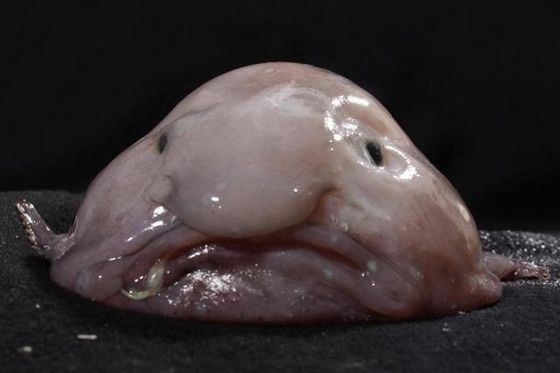
A fish with human teeth in its mouth is hard to imagine. Nevertheless, it exists - it is a paku. It can be seen in freshwater rivers of South America. Pacu is a relative of the piranha, although unlike its relative, it is omnivorous. The pacu's favorite food is fruits and nuts, which it crushes with its sinister teeth.
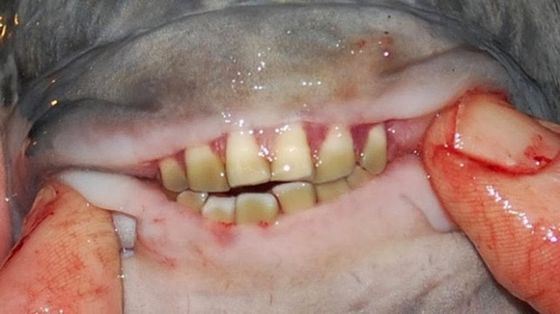
The most interesting fish- snakehead. It lives in swampy areas and shallow warm rivers of our country. Her head resembles a snake's. In addition to its frightening appearance, this fish has a nasty character. She is capable of gobbling up not only all the fish living in the reservoir, but is ready to deal even with her own offspring. It can also look for suitable prey on land, staying there for up to five days and breathing atmospheric air. In search of food, the fish crawls to another body of water on land.
Unusual birds
Birds can surprise you too. There are those that very accurately imitate human voices, others can run faster than fly, and there are birds whose appearance is striking in its unusualness.The bird with a helmet-like head lives in Borneo, Sumatra and the Malay Peninsula. Its name is helmet-billed kalao. She has a shiny neck and a massive beak. She is so unusual that she seems like the hero of a foreign action movie.
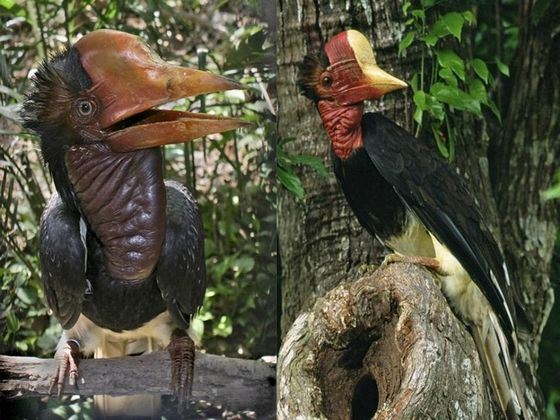
The feared bird is the gigantic nightjar, which lives in the forests of Central and South America. This scary beauty hunts at night, sitting with his mouth wide open, looking out for insects with his frightening eyes.
The giant bearded vulture is a bird with a wingspan of up to three meters. The surprising thing is that it feeds on bone marrow. When getting food, the bearded vulture throws turtles down from a height so that their shells break. There were cases when a huge bird drove sheep to the edge of a cliff, the sheep fell, and the lamb feasted on his favorite delicacy. The shoebill lives only in Africa - it is a very rare bird with an unusual appearance. Its relatives are marabou, storks and herons. Shoebill resembles a prehistoric creature with a disproportionately huge head and an impressive wide beak. The height reaches one and a half meters, and the weight is fifteen kilograms.
The most unusual creature on Earth
To say which of the living creatures on Earth is the most unusual is not an easy task. Perhaps the most unusual is the tardigrade, which is also the most tenacious on the planet. It can withstand extremely low and very high temperatures; even after drying out, the creature remains viable for two years. 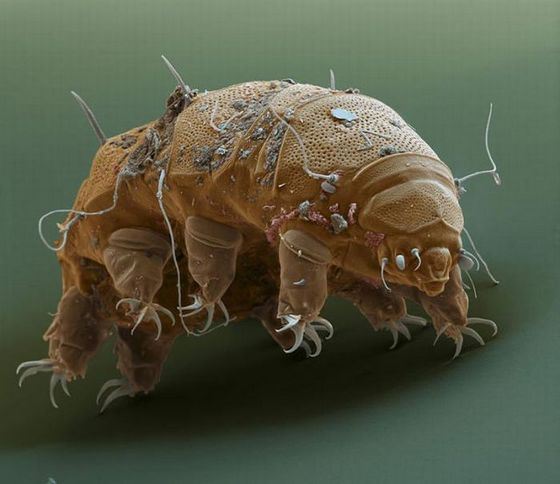
Tardigrade is an invertebrate creature up to one millimeter long. Tardigrades live everywhere, they are found under ice and in hot springs - in all corners of the planet. They can even live in the vacuum of space.
There is a huge variety of living creatures on Earth. And each one is interesting, unique and inimitable in some way. Unfortunately, some of them have already disappeared or are listed in the Red Book. But among the remaining ones there are many unusual specimens, for example, those that cause fear. What are they, the most scary creatures inhabiting our Earth?
The ten most terrible and dangerous animals were chosen by environmentalists. They brought the man here too. And although there are very attractive specimens among people, they have no equal in causing harm to nature. People make horror films about animals, people destroy each other and their own kind just like that. There are probably no scarier animals on the planet.
Underwater world of monsters
In the depths of the sea there are truly strange and terrible creatures. People are familiar with some of them, but we have no idea about some (due to the great depths), because the sea opens up 70% of the earth's surface.
The sabertooth fish, which lives at great depths, is scary and dangerous. It is also nicknamed the “man-eating fish,” although whether it eats people is a moot point. Covered with rough skin, the fish has four huge and long teeth. They are so long that they do not fit into the jaw, so there are special slots for them located in the brain. At great depths, it is not so easy to find prey, but if it is caught, the saber tooth will attack and bite it until the victim turns into prey. Although the fish is small in size: about 15 cm. For a long time, young and adult individuals were classified as different types, they are so different.
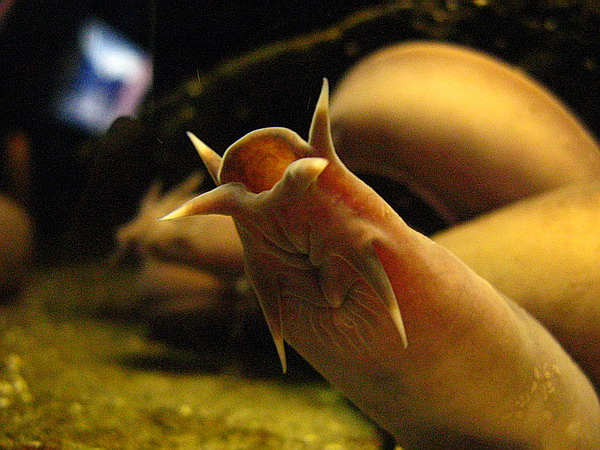
This is a unique, jawless species of fish of which there are few left in the ocean - the hagfish or “witch fish”. It goes hunting only at night, lives deep in the water column and feeds on weak and dying individuals. She searches for prey in a very unique way. Swimming against the current, she feels vibrations in the water with the help of tentacles near her mouth. When attacking, the hagfish gnaws a hole in the victim, wrapping itself around it and tying it into a knot. Climbing inside, it first eats the liver and then the muscles. And all that remains from the prey is skin and skeleton. During the day, it “silts up”, only the head remains on the surface. Can live for a long time without food. It can be classified as the most slippery organism both in water and on land. The mucus serves as a lubricant and is unpleasant to predators. They do not live alone, but in populations.
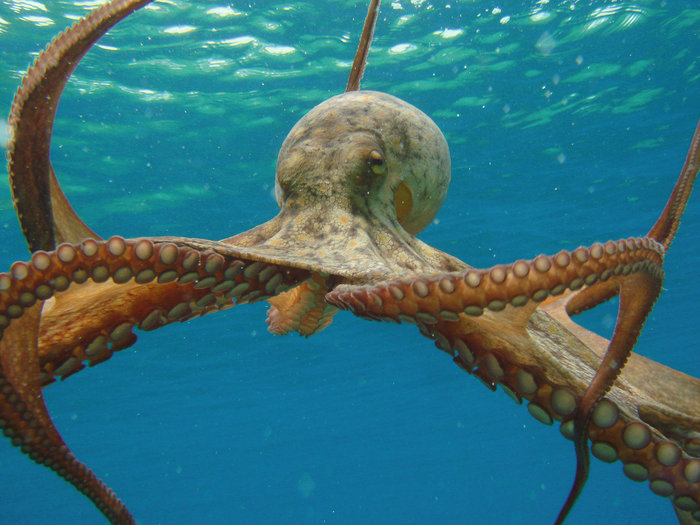
Many experienced sailors told stories about a giant sea monster - the “kraken”. These are stories and legends about huge squids. What legends are there! Such squids really exist and their sizes are amazing - from 13 to 20 meters. Squids are predators. They feed on deep-sea fish and squid, only small ones. The tentacles have jagged suction cups as hunting tools. They easily rise to the water surface due to the presence of a special substance in the body.
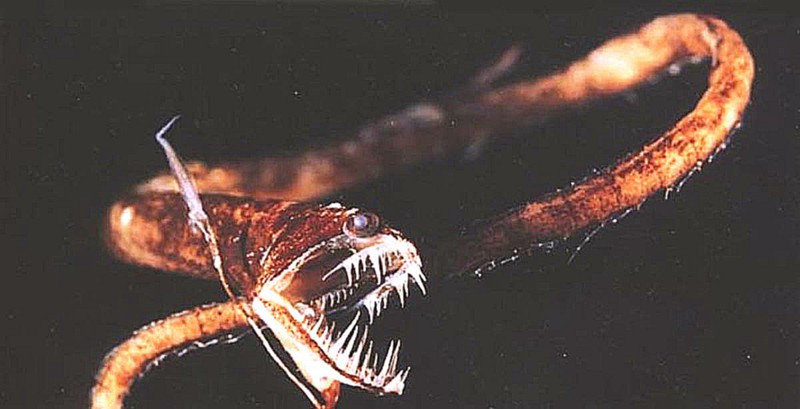
On deep sea lives dragon fish or idiot. Females are up to 40 cm, have very long teeth, they don’t even allow their mouths to close. Teeth also glow in the dark. The idiot is able to grab and eat prey larger than itself due to its movable jaws. And in order to eat a large trophy, the internal organs move back. Males are small, 6 cm long, and their intestines do not work. They simply float in the water column, attracting females with their glow.
Cave Dwellers
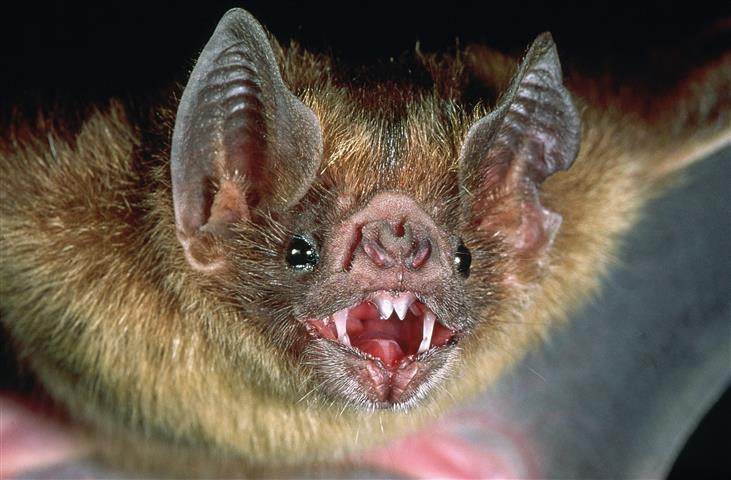
Are there vampire bats on earth? The answer is yes. These are inhabitants of Central and South America. Their body is not large, but the wing span reaches 20 cm. They drink the blood of adult mammals. On sleeping animals, mice use incisor teeth to make incisions from which blood flows. It does not clot: there are special substances in the saliva of mice. The animal sleeps peacefully, as it simply does not feel anything. At night, shepherds pull nets over their domestic animals, because mice not only feed on blood, but also carry rabies. The bats They must eat regularly, otherwise they lose strength and die in literally 2-3 days. They sense their victims using sounds, smells and echolocation. Many people do not know that vampires can not only fly quickly, but also run well. They spend half their lives in the darkness of caves.
Jungle Dwellers
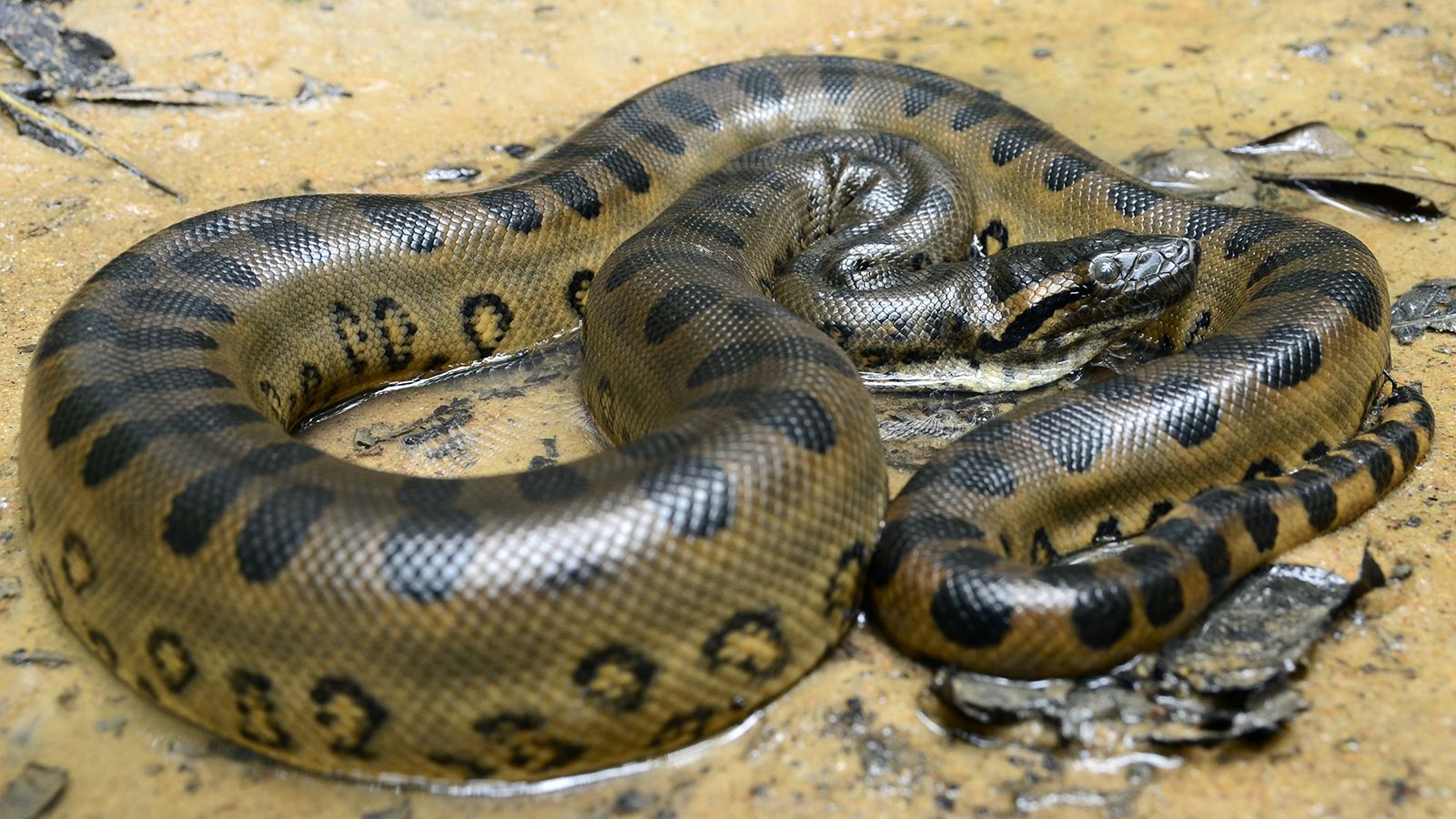
Dubbed the “bull killer,” the anaconda snake does have a terrifying reputation. Weighing 250 kg, it has gigantic strength and can crush quite large animals. She wraps herself around her victim and strangles her. But poisonous snake is not. There are eyes and nostrils on the top of its head, so it can breathe and watch its prey while in the water. She spends a lot of time in fresh water, for which it is also called the water boa. And she sheds the old skin without leaving the reservoir, while it rubs against the bottom. He almost doesn’t hear sounds, but he feels sound vibrations with his whole body. Doesn't blink, like all snakes. It is believed to hypnotize prey. Refers to ovoviviparous. The cubs hatch from eggs directly in the mother's body, and she carries them for about 6-7 months, while losing a lot of weight.
Island lovers
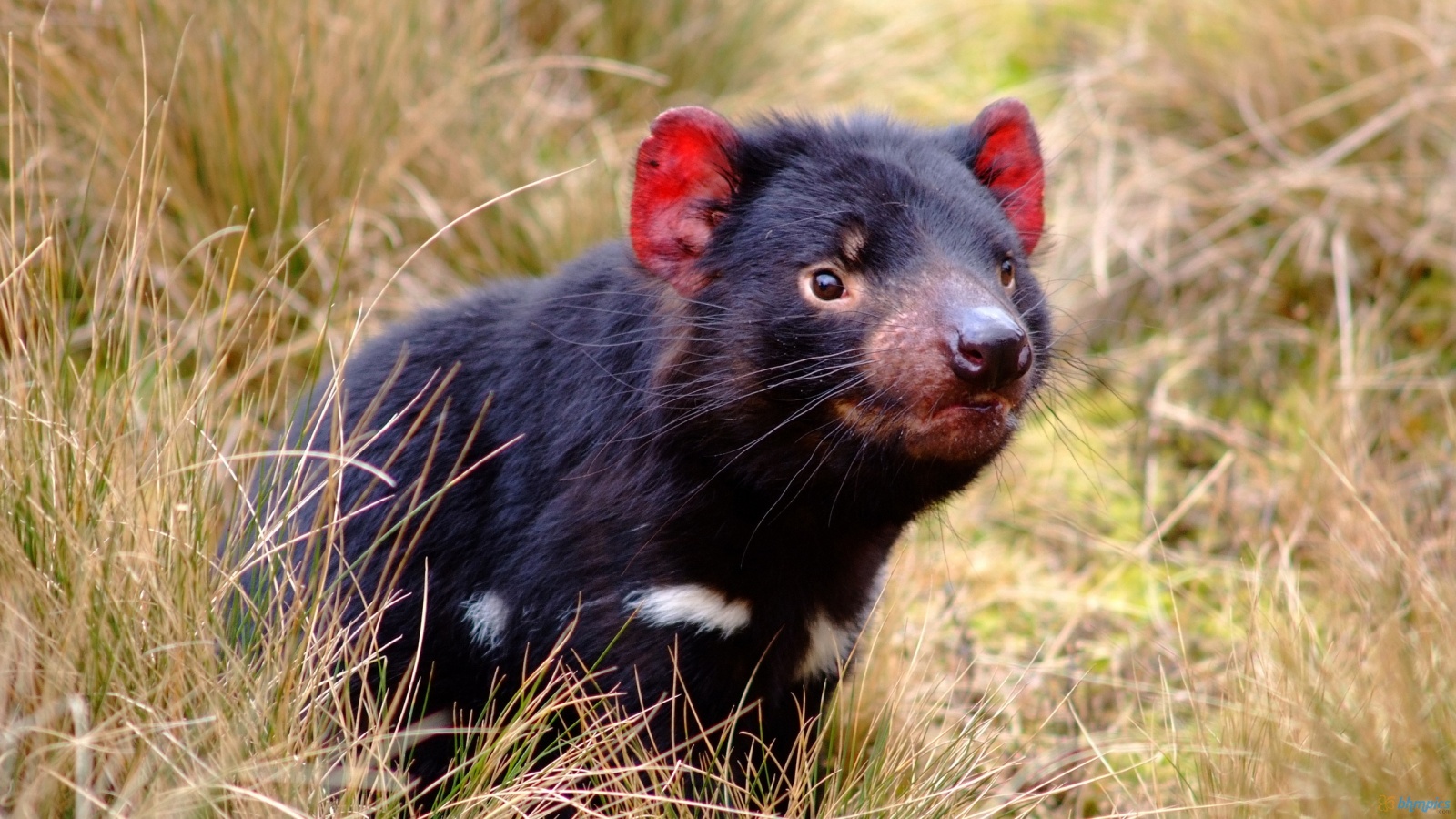
The ratio of jaws to body length of the Tasmanian devil is simply amazing. In terms of strength and bite power, he is even ahead of a lion! This representative of the marsupial family lives only on the island of Tasmania. It's pretty large predator, which weighs about 12 kg. It is also called the “marsupial devil”: with its jaws it can bite through bones. The animal eats in company. Up to 12 individuals come to the feast and “understand” each other through sounds and postures. The Tasmanian is very gluttonous; he must eat an amount of food per day equal to approximately 15% of his own body weight. It feeds on everything: insects, snakes, small birds and animals. May attack tourists who mistake it for a puppy.
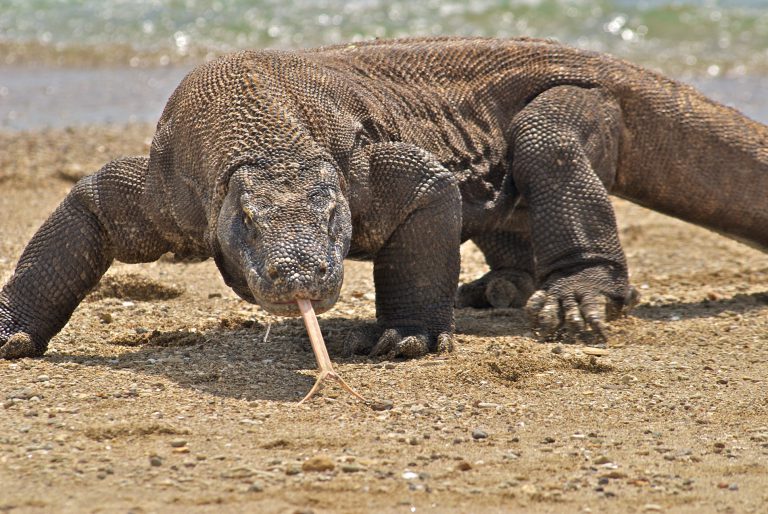
The Komodo dragon lives on Komodo Island and nearby islands in Indonesia. It looks like a dragon that has survived to this day in myths and legends. It is called a dragon, a dinosaur, but it is still a monitor lizard. The three-meter monster feeds on carrion, but is strong and can kill deer, pigs and even humans. The cutting edges of the monitor lizard's teeth are similar to saw teeth. With their help, he can easily gut the carcass of his victim. Cases of human hunting have been recorded. Most often, when a monitor lizard bites, a person dies from sepsis (blood poisoning). But you can’t kill them, as they are listed in the Red Book.
Mexican passions
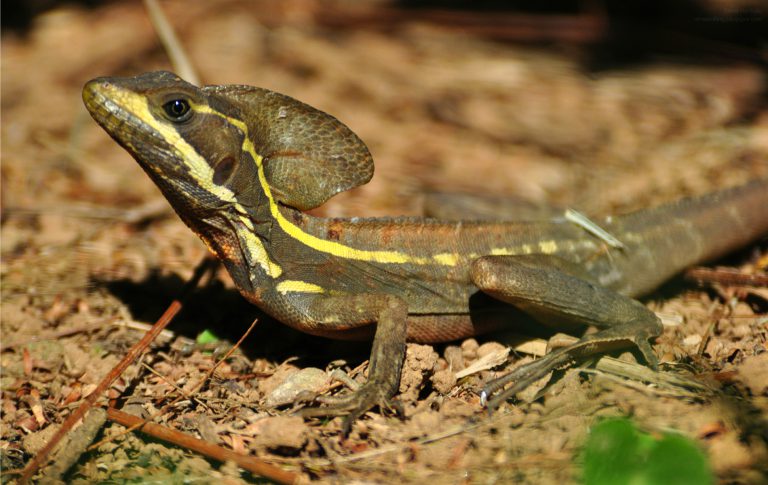
The inhabitant of the Mexican expanses is the toad-shaped lizard or basilisk. She does not look like ordinary slender and nimble lizards. There are large outgrowths on the head that look like horns, and on the scales there are spike-like outgrowths. She doesn't run well, but she knows how to bury herself well in the sand due to the movement of her body. When it rains, the basilisk changes its body shape and droplets of water flow directly to the corners of its mouth. The lizard is prolific: it can lay up to 40 eggs at once. But she shows her most unusual qualities when defending herself from predators. She defends herself from enemies by “shooting” real blood from her eyes. And this technique saves her life.
Inhabitants of the Earth

You probably don’t need to think long about what the most terrible creature on earth is. This is a person who occupied different habitats, destroying forests, plowing and depleting the soil, polluting water, producing toxic waste. Man spends Natural resources thoughtlessly, already in debt. All of him economic activity leads to the destruction of living beings on the planet. And even the most terrible creatures in the world are not able to stop him.
